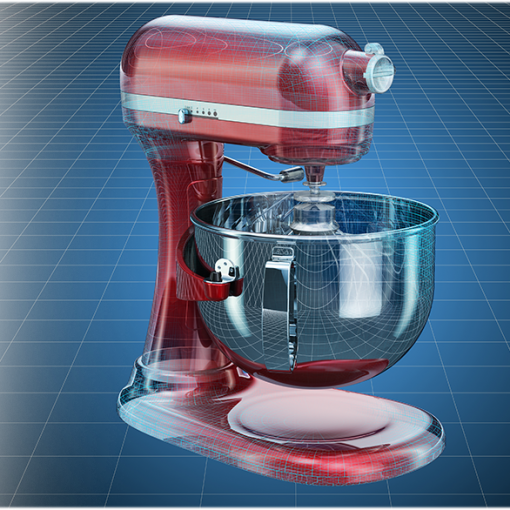Mixers are built to handle a wide range of kitchen tasks, from whipping cream to kneading dough. Still, one of the most common issues we see is whisks that bend or snap under strain. When this happens, it is not only frustrating but also a sign that something in the process has gone wrong. At MIXER REPAIR SERVICES CALGARY, we often work with people who do not realize that small changes in mixing technique, load, or maintenance could have prevented the damage.
Stress Caused by Heavy Doughs and Thick Batters
One of the most frequent reasons whisks bend is the resistance created by dense ingredients. Thick doughs, such as bread or cookie dough, apply more pressure than a whisk was designed to handle. While mixers come with different attachments, many people use the whisk where a dough hook would have been safer. The thin wires of a whisk do not have the same strength as a solid attachment, so they flex under pressure. Over time, repeated misuse weakens the structure until it finally breaks.
We always remind our customers to use the right tool for the job. If the recipe calls for heavy kneading, swap to a dough hook or paddle. This small habit spares both the whisk and the motor from unnecessary stress. When a whisk bends from overloading, it is often a clue that the machine has been pushed beyond its design limits.
Metal Fatigue Over Time
Every time a whisk flexes, the metal undergoes stress. Even when used correctly, constant movement eventually weakens the structure through what we call metal fatigue. With light mixtures, this process takes much longer. With heavy mixtures, it accelerates, and the wires can bend permanently or snap at their weakest point.
Whisks made of thinner materials are especially vulnerable. Once one wire bends slightly, the pressure shifts to the others, creating a chain reaction. That imbalance leads to further stress until failure is unavoidable. Checking the whisk regularly for tiny bends or cracks allows us to replace it before complete failure occurs. Preventive care matters because catching early signs saves us from mid-recipe breakdowns.
Incorrect Mixer Speed Settings
Speed settings matter more than many people think. Using high speed while mixing heavy dough is a quick way to strain the whisk. The sudden torque from the motor pushes the wires harder into the mixture, causing bending or twisting. Slower settings are usually recommended for dense mixtures since they reduce the load per rotation.
It can be tempting to turn up the speed to finish faster, but we have seen this habit damage both the attachment and the mixer itself. By respecting the speed guidelines in the manual, we extend the life of the equipment. A whisk is not just a tool to stir; it is part of a balanced system where speed, resistance, and design all interact.
Overfilling the Mixing Bowl
Another factor that leads to broken whisks is overfilling the bowl. Too many ingredients at once create uneven mixing. When ingredients are packed tightly, the whisk cannot move freely. The result is added strain that causes the wires to bend. It is better to mix in smaller batches if a recipe produces a large amount.
Many of us underestimate how much volume a bowl can truly handle. While the bowl itself might appear large enough, the whisk needs space to move through the ingredients. If the whisk gets stuck or blocked, all that force has nowhere to go except back into the metal structure. Over time, this repeated strain damages the wires permanently.
Hard or Unprocessed Ingredients
Sometimes the issue comes from what is inside the mixture. Ingredients like nuts, seeds, or chunks of chocolate can create sudden impact points. When the whisk collides with something hard, it causes an uneven stress load. Even a single hard object can bend a wire out of shape.
To avoid this, we recommend chopping or processing tough ingredients before adding them. If a recipe calls for nuts or chocolate chunks, fold them in at the end with a spatula instead of relying on the whisk. This simple adjustment keeps the whisk from making direct contact with solid objects, protecting both the tool and the mixer.
Poor Quality Attachments
Not all whisks are made to the same standard. Some low-cost replacements use weaker metals that bend more easily. While they may look similar to the original, their durability is often much lower. When customers come to us with repeated bending issues, we often find the attachment is a cheaper aftermarket product.
Choosing a whisk that matches the mixer brand and specifications ensures better performance. Although original parts may cost more, they typically last longer under regular use. Quality makes a difference because stronger alloys resist bending and distribute stress more evenly across the wires.
Hidden Motor Strain and Imbalance
When a whisk bends, it may also signal hidden stress in the mixer motor. If the motor is not aligned properly or if the gears are worn, the whisk experiences uneven pressure. That imbalance can cause the wires to twist out of shape faster than usual.
We often find that people replace their whisk without realizing the deeper issue lies in the machine itself. Regular servicing helps identify whether the motor is delivering balanced force to the attachment. If not corrected, even a brand new whisk will bend again in a short time. This is where mixer repair services Calgary can provide guidance and long-term solutions.
Cleaning and Care Mistakes
How we clean whisks also affects their lifespan. Placing them in a dishwasher exposes them to high heat and harsh detergents. Over time, this weakens the metal and makes it more likely to bend. Hand washing with warm water and mild soap keeps the wires stronger for longer.
We also need to store them properly. Tossing whisks into a drawer with other utensils leads to bending before they are even used again. Hanging or keeping them in a dedicated container avoids this problem. It is surprising how much simple storage habits influence the durability of kitchen tools.
What To Do When a Whisk Bends
When a whisk bends slightly, some people try to bend it back into place. While this might work temporarily, it often makes the wire weaker. Each adjustment causes more fatigue in the metal. Once bent, the whisk is usually less reliable and prone to breaking completely.
The safest step is replacement. Continuing to use a damaged whisk risks broken wires ending up in food or damaging the mixer motor. Our team encourages people to check their attachments often and treat replacement as a form of maintenance rather than failure. Preventing further damage always saves time and effort.
Practical Tips to Prevent Whisk Damage
There are simple practices that keep whisks in better condition. First, match the attachment to the recipe. Whisks are best for light tasks like whipping cream or beating eggs. Second, pay attention to speed settings and resist the urge to rush through heavy mixtures. Third, keep batch sizes reasonable so the whisk has room to move. Finally, handle cleaning and storage with care so the tool is not weakened outside of use.
When these habits become routine, whisks last much longer and mixing remains smooth. If bending still occurs despite best efforts, it may point to a deeper mechanical issue with the mixer itself. That is when expert support becomes important. Reaching out through our contact us page ensures advice and service tailored to the situation.
FAQs
Why does my whisk keep bending with cake batter?
Cake batters vary in density, and if overmixed at high speed, even a whisk suited for medium tasks can bend. Reducing speed and mixing in stages usually prevents the issue.
Can I use a bent whisk safely?
It is not recommended. A bent whisk places uneven stress on the motor and risks snapping. Replacing it avoids damage to both the food and the mixer.
What attachment should I use for bread dough?
Bread dough should always be mixed with a dough hook. Whisks are not designed to handle the weight and density of yeast-based doughs.
How often should I replace a whisk?
Replacement depends on use. For frequent bakers, checking every few months for bends or cracks is smart. Occasional users may only need to replace once every few years.
Can a mixer motor cause whisk problems?
Yes, if the motor or gears are misaligned, the whisk receives uneven force. This can lead to bending even with light mixtures. A service check identifies hidden mechanical issues.




